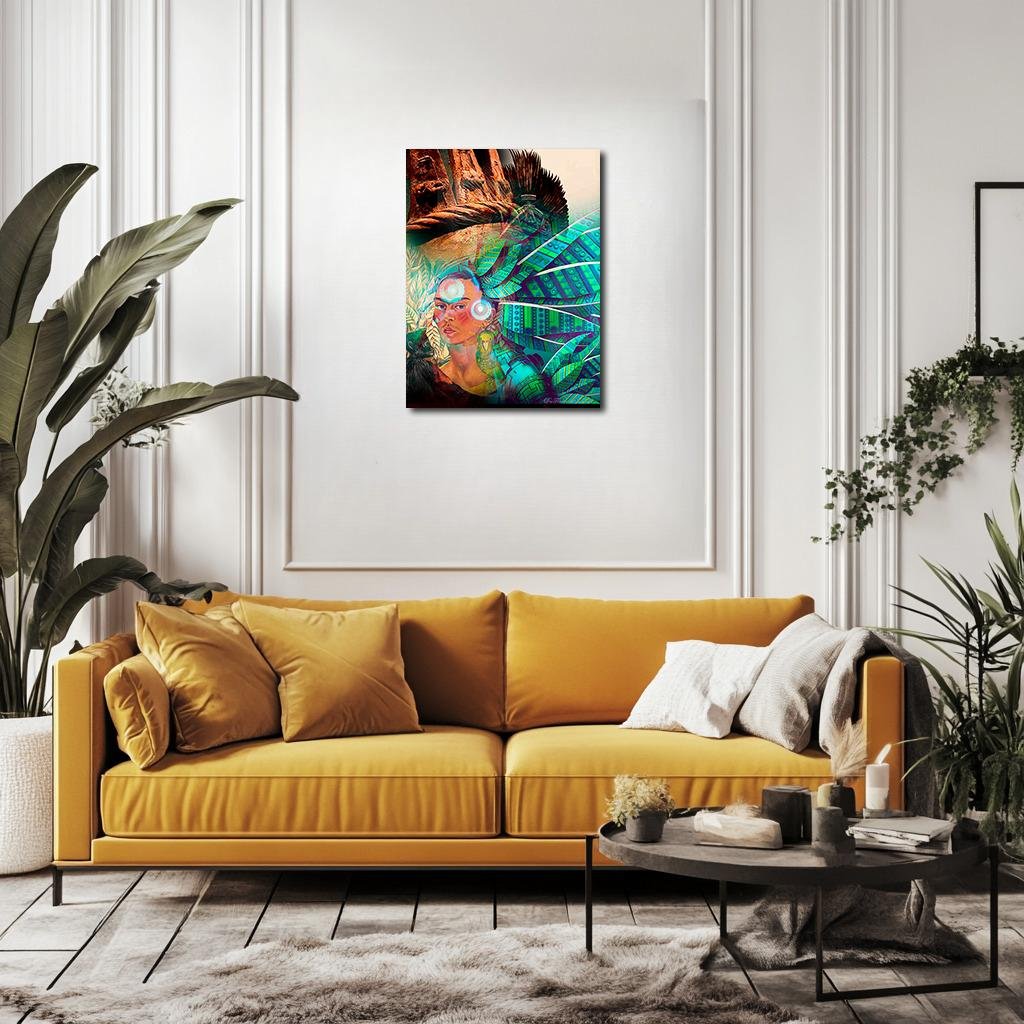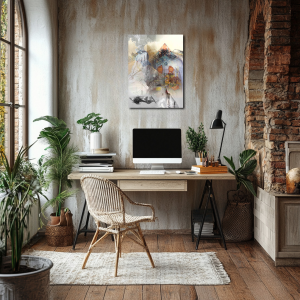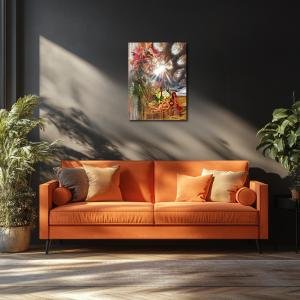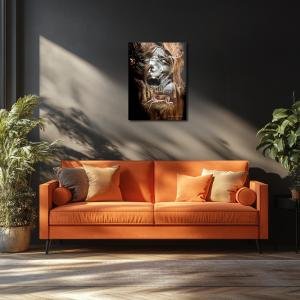The Spirit of Plumes: Frida’s Ancestral Echo
The Spirit of Plumes reimagines Frida Kahlo’s Self-Portrait with Monkey and Parakeet as a mythic vision of ancestral strength and sacred identity. Through warm ochres, glowing teals, emerald feathers, and shadowed animal totems, Kahlo stands crowned in ceremonial splendor—both warrior and channel. Surrounded by symbols of ancient Mexico and divine geometry, the piece honors Frida as not merely an artist of pain, but a bearer of sacred continuity, forever adorned in the memory of earth and spirit.
Please see Below for Details…
Hotline Order:
Mon - Fri: 07AM - 06PM
404-872-4663
This conceptual reimagining of Frida Kahlo’s Self-Portrait with Monkey and Parakeet reconstructs her quiet communion with animals into a cosmic revival of indigenous pride, mythic intelligence, and the sacred geometry of memory. Titled The Spirit of Plumes , the piece transforms the intimacy of her animal companions into an explosion of Mesoamerican ritual energy—a radiant, feathered invocation of Kahlo’s spiritual inheritance and psychic resilience.
Frida appears centered in solemn clarity, her face grounded and radiant beneath two glowing orbs that hover above her brow—light beings, or ancestral vision points, pulsing gently with intuitive knowledge. Her gaze, firm and contemplative, confronts the viewer not with ego, but with a channeling power, as if she is speaking not only for herself, but for a deeper lineage that stretches across centuries. At her shoulder rests the parakeet—emerald-hued and poised like a sentinel—while beside her sits the dark monkey, a totem of shadow, instinct, and mischief, rendered here with symbolic restraint.
Surrounding this trio is a vast ceremonial energy. To the right, an enormous headdress composed of vibrant turquoise, jade, and indigo feathers fans outward, each plume etched with intricate Mesoamerican symbols—geometric emblems of sun, wind, maize, and blood memory. This ceremonial garb, echoing the headdress of Quetzalcoatl or an Aztec priestess, suggests that Frida is not merely depicted in a portrait, but is being adorned for spiritual battle or ancestral communion. She stands not only as an artist but as an embodiment of sacred continuity.
The background swells with layered history. Behind her left shoulder, a sepia-toned sculptural fragment of a pre-Columbian deity looms—a broken yet enduring face of earth’s power, carved in stone and sun-scorched time. Above, shadows of feathered warriors and ritual dancers flicker like echoes of past ceremony, drawn from mural, memory, or smoke. Their translucent bodies remind us that identity, for Kahlo, was never solely present-tense—it was woven from buried bones and bloodlines.
Color breathes with symbolism throughout The Spirit of Plumes . Frida’s skin glows with warm umber and sienna hues, evoking the deep clay of Mexican soil. Her body is not separate from the land—it radiates from it. The parakeet beside her bursts in shades of lime and chartreuse, vivid and living, its small form pulsing with the vibrancy of spoken truth and primal song. The monkey is painted in subdued shadow—charcoal black, softened with smoky browns—its presence acting as emotional gravity to the parakeet’s skyward lightness.
The headdress is a riot of sacred chromatics—teals, peacock blues, and emerald greens glowing like stained glass in ritual sunlight. These feathers are not decorative; they are transformative, suggesting the presence of divine intelligence, ancestral identity, and shamanic seeing. Each pattern inscribed into the feathers carries the suggestion of codes—forgotten languages whispered into the world through design. The feathers fan outward into the soft green aura surrounding Kahlo’s head, a kind of psychic crown, or radiant canopy of origin.
The glowing orbs above Frida’s head are treated with delicate luminescence—pale lavender and pearlescent silver—contrasting with the organic tones of the rest of the work. These celestial elements suggest that Kahlo’s insights and identity were not purely terrestrial; they reached into a mythic realm of knowing, where animal guides and ancestral spirits whispered beyond suffering.
The background flows in gradients of rust, gold, and moss—earthy, damp, and sun-soaked, evoking ceremonial lands where gods were once fed with hearts and feathers. Yet the upper left corner breaks into light smoke and rose-colored dusk, gently suggesting that Kahlo, while rooted in the old ways, carried them forward into a new, hybrid world.
When I created The Spirit of Plumes , I wanted to honor how Kahlo’s quiet portraits often held unspeakable force—how her gaze, though serene, always hinted at tectonic truths. In her Self-Portrait with Monkey and Parakeet , she gave us an image of communion, of silence filled with primal dialogue. Here, I imagined that moment extended into mythic vision—where her body, her animals, her bloodlines, and her art coalesced into ceremony. She does not merely paint the past—she wears it, embodies it, leads it into the present as a living ritual.
The composition swells outward from her heart: the parakeet drawing energy upward, the monkey drawing inward, and the feathers radiating in all directions, mapping a spirit that will not be confined. There is no frame here, only motion—ancestral, eternal.
In this vision, Frida Kahlo is not merely a woman holding animals. She is the high priestess of memory, the keeper of feathered truths, the breath between the gods and the ground.
Add your review
Your email address will not be published. Required fields are marked *
Please login to write review!
Looks like there are no reviews yet.








